![]()
![]()
![]()
Use LEFT and RIGHT arrow keys to navigate between flashcards;
Use UP and DOWN arrow keys to flip the card;
H to show hint;
A reads text to speech;
166 Cards in this Set
- Front
- Back
|
Scope
Schedule Cost |
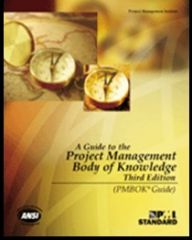
What are the 3 project constraints?
|
|
|
1-Initiating
2-Planning 3-Executing 4-Controlling 5-Closing |
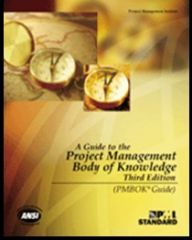
5 Project Management Processes
|
|
|
Project Management Professionals
|
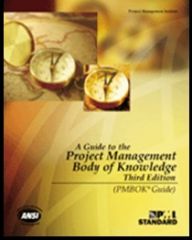
PMP
|
|
|
A temporary endeavor undertaken to create a unique product, service, or result.
|
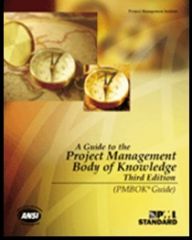
Definition of a "project"
|
|
|
EV – AC (BCWP – ACWP)
|
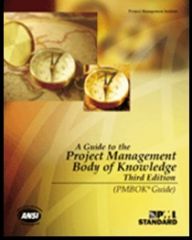
Cost Variance (CV) Formula
|
|
|
EV – PV (BCWP – BCWS)
|
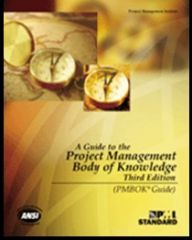
Schedule Variance (SV) Formula
|
|
|
EV/AC (BCWP/ACWP)
|
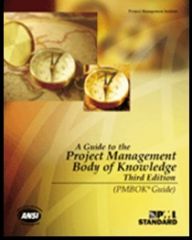
Cost Performance Index (CPI) Formula
|
|
|
EV/PV (BCWP/BCWS)
|

Schedule Performance Index (SPI) Formula
|
|
|
Tells how much is budgeted for the total project. BAC is the budget at completion, the total project. BAC is the budget at completion, the total budgeted cost.
|
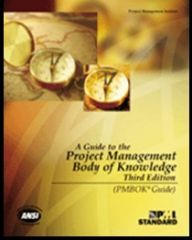
Budget at Completion (BAC)Definition
|
|
|
n(n-1)/2
|
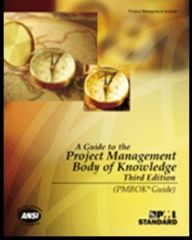
Calculation to determine the number of communication paths.
|
|
|
TS = LF-EF =LS-ES LF = Late Finish EF = Early Finish LS = Late Start ES = Early Start TS=0 is the critical path
|
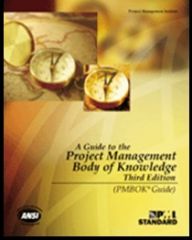
Total Slack (TS)
|
|
|
FS of x = EX (of x+1) - EF (of x) -1 ES (of x+1) = Early Start of the earlies succeeding activity to x EF = Early Finish
|
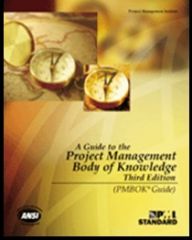
Free Slack (FS)
|
|
|
σ=(P-O)/6 P = Pessimistic O = Optimistic
|

Standard Deviation (σ) of a single activity
|
|
|
σ^2 = ((P-O)/6)^2 P = Pessimistic O = Optimistic
|
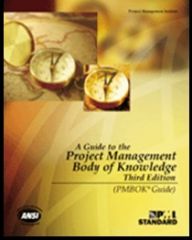
Standard Deviation Variance for a Single Activity (σ)^2
|
|
|
√∑σ^2 = √sum((P-O)/6)^2 O=optimistic P=pessimistic
|
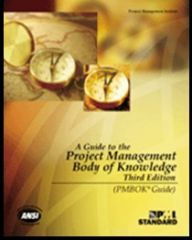
Standard Deviation for series of activities
|
|
|
VAC = BAC - EAC BAC = Budget at completion EAC = Estimate at completion
|
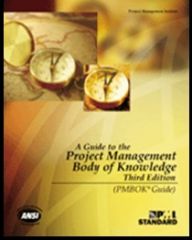
Variance At Completion (VAC)
|
|
|
COQ = EFTW + COPQ = POC +PONC EFTW = Essential 1st Time Work COPQ = Cost of Poor Quality POC = Price of Conformance PONC = Price of Non-conformance
|

Cost of Quality (COQ)
|
|
|
PV = FA / (1+ i^n) FA = Future Amount i = interest rate n = number of years
|
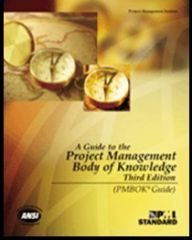
Present Value (PV)
|
|
|
= Asset Cost / Useful Life
|

Straight-line Depreciation
|
|
|
= 2 x ((Asset Cost - Accumulated Depreciation)/useful life)
|
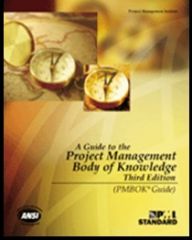
Double Declining Balance
|
|
|
An estimating technique that uses the values of parameters, such as scope, cost, budget, and duration from a previous, similar activity for estimating for future activity.
|
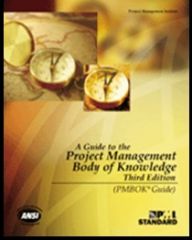
Analogous Estimating [Technique] (Activity Duration Estimation)
|
|
|
Effort applied to project work that is not readily divisible into discrete efforts for that work, but which is related in direct proportion to measurable discrete work efforts.
|
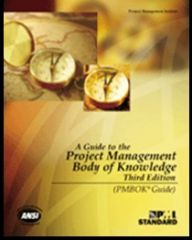
Apportioned Effort (AE)
|
|
|
A schedule network diagramming technique in which schedule activities are represented by arrows and nodes represent sequence in which the schedule activities are expected to be performed.
|

Arrow Diagramming Method (ADM) [Technique] (Activity Sequencing)
|
|
|
A technique that explores the accuracy of assumptions and identifies risks to the project from inaccuracy of the assumption.
|
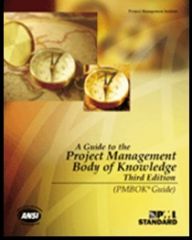
Assumptions Analysis [Technique] (Risk Identification)
|
|
|
The calculation of the late finish and start dates for uncompleted work by working backwards through the schedule logic from the end date.
|
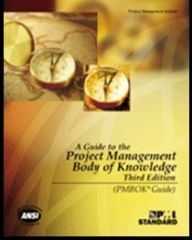
Backward Pass
|
|
|
Method of estimating a component of work from the lowest, more detailed pieces of work and then aggregating the resource/cost needs upwards into a total quantity for that component.
|
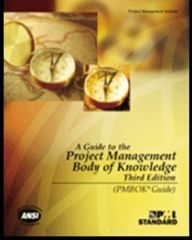
Bottom-Up Estimating [Technique] (Activity Resource Estimating) (Cost Estimating)
|
|
|
A general data gathering and creativity technique that can be used to identify risks, ideas, or solutions to issues by using a group of team members or experts and recording their ideas.
|

Brainstorming [Techinique] (Risk Identification)
|
|
|
The sum of all the budgets established for the work to be performed on a project. The total PLANNED VALUE for a project.
|
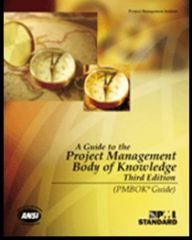
Budget at Completion
|
|
|
Any numbering system used to monitor project costs by category (e.g. labor, supplies). Based upon the corporate chart of accounts of the perfoming organization.
|

Chart of Accounts [Tool]
|
|
|
Any numbering system used to uniquely identify each component of the WBS.
|
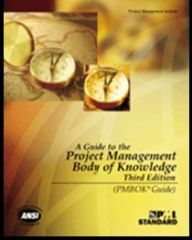
Code of Accounts [Tool]
|
|
|
A source of variation on a control chart that would be considered normal and within limits and is predictable.
|

Common Cause Definition
|
|
|
A graphic display of process data over time and against established control limits. Has a centerline that assists in detecting trends of plotted values towards the limits.
|

Control Chart [Tool] (Perform Quality Control)
|
|
|
The area composed of 3 standard deviations on either side of the centerline or mean of a control chart that reflects the expected variation in the data.
|
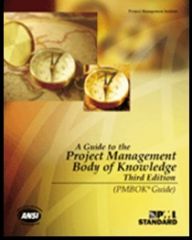
Control Limits (on a control chart in the Perform Quality Control process)
|
|
|
Determining the costs incurred to ensure quality, whether it is Cost of Conformance (Prevention, appraisal costs) or Cost of Non-Conformance (Failure, rework, waste, reputation)
|
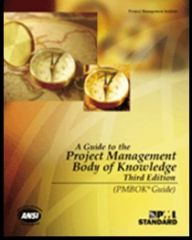
Cost of Quality (COQ) [Technique] (Quality Planning)
|
|
|
A type of reimbursable contract where the buyer reimburses the seller for the allowable costs for the contract work and the seller also receives a fee calculated as an agreed upon percentage of Actual Cost.
|
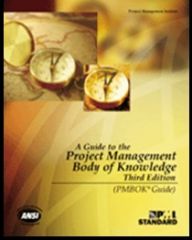
Cost-Plus-Fee (CPF) Cost-Plus-Percent-Cost (CPPC)
|
|
|
A type of reimbursable contract where the buyer reimburses the seller for the allowable costs for the contract work and the seller also receives a fixed amount of profit (Fee).
|
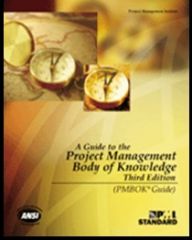
Cost-Plus-Fixed-Fee (CPFF)
|
|
|
A type of reimbursable contract where the buyer reimburses the seller for the allowable costs for the contract work and the seller earns its profit if it meets defined performance criteria.
|
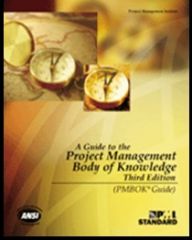
Cost-Plus-Incentive-Fee (CPIF)
|
|
|
A type of contract where the buyer reimburses the seller for the allowable costs for the contract work and the seller also receives a fee representing the seller's profit.
|

Cost-Reimbursable Contract
|
|
|
A measure of cost performance on a project represented by the Earned Value (EV) - Actual Cost (AC)
|
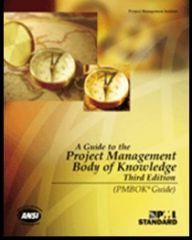
Cost Variance CV = EV - AC CV = BCWP - ACWP
|
|
|
A specific type of project schedule compression technique performed by taking action to compress the total schedule duration for the least incremental cost by analyzing cost and schedule tradeoffs.
|
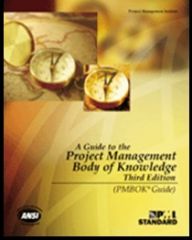
Crashing [Technique] (Schedule Development)
|
|
|
A schedule network analysis technique that modifies the project schedule to account for limited resources. (mixes deterministic and probablilistic approaches)
|
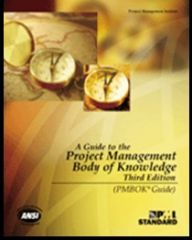
Critical Chain Method [Technique] (Schedule Development)
|
|
|
A schedule network analysis method used to determine the amount of scheduling flexibility(amount of float) on various logical network paths to determine the minimum project duration. Forward pass to get early start and finish dates/Backward pass to get late start and finish dates.
|
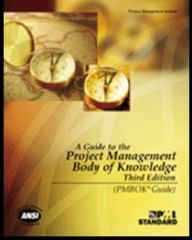
Critical Path Method (CPM) (Schedule Development)
|
|
|
A diagram that describes a decision under consideration and the implications of choosing one or another alternative. Used when future outcomes are uncertain. (Expected monetary value analysis)
|
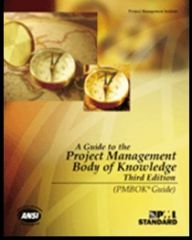
Decision Tree Analysis [Technique] (Quantitative Risk Analysis)
|
|
|
An information gathering technique used as a way to reach a consensus of experts on a subject while reducing bias. (Anonymous participation)
|
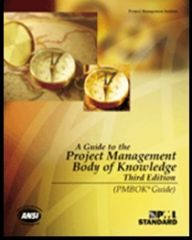
Delphi Technique [Technique] (Risk Identification)
|
|
|
A management technique used for evaluationg a proposed design to ensure that the design meets customer requirements.
|
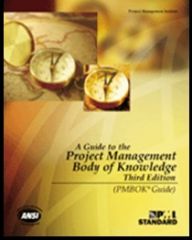
Design Review [Technique] (Quality)
|
|
|
A statistical technique that calculates the average outcome when the future is uncertain commonly used in decision tree analysis.
|

Expected Monetary Value (EMV) [Technique] (Quantitative Risk Analysis)
|
|
|
Type of Fixed price contract where the buyer pays the seller a set amount regardless of the seller's costs.
|
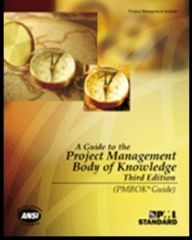
Firm-Fixed-Price (FFP)
|
|
|
A type of contract where the buyer pays the seller a set amount and the seller can earn an additional amount if the seller meets defined criteria.
|
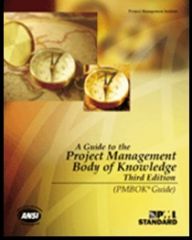
Fixed-Price-Incentive-Fee (FPIF)
|
|
|
Type of contract involving a fixed total price for a well defined product.
|
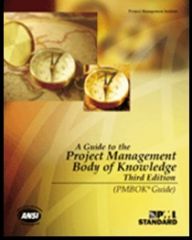
Fixed-Price or Lump-Sum Contract
|
|
|
The depiction in a diagram format of the inputs, process actions and outputs of one or more processes within a system
|
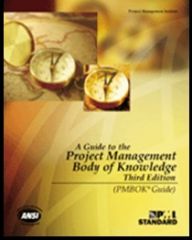
Flowcharting [Technique] (Perform Quality Control)
|
|
|
Estimates or predictions of conditions and events in the projects future based on projects past and expected performance. Updated and reissued based on Work performance info as the project is executed. Yields EAC and ETC
|
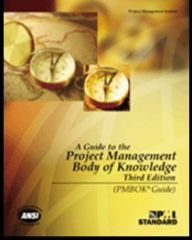
Forecasting [Technique] (Cost Control)
|
|
|
Amount of time that a schedule activity can be delayed without delaying the early start of any immediately following schedule activities.
|

Free Float (FF)
|
|
|
A category or rank used to distinguish items that have the same functional use, but do not share the same requirements for quality.
|
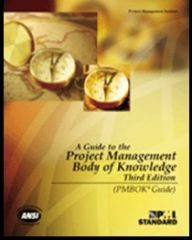
Grade
|
|
|
Examining or measuring to verify whether an activity, component, product, result or service conforms to specified requirements.
|
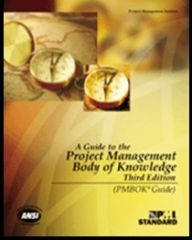
Inspection (reviews, audits, walkthroughs) [Technique] (Scope Verification) (Perform Quality Control) (Contract Admin)
|
|
|
A mod of a logical relationship that allows an acceleration of the succesor activity.
|
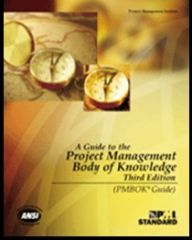
Lead (Schedule Development)
|
|
|
68.26
|
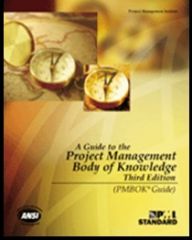
1 Sigma equals
|
|
|
95.46
|

2 Sigma equals
|
|
|
99.73
|

3 Sigma equals
|
|
|
99.9997
|
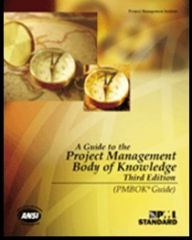
6 Sigma equals
|
|
|
PERT Pessimistic + (4 x Realistic) + Optimistic / 6
|
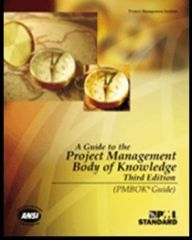
The Three Point Estimate formula
|
|
|
Pessimistic – Optimistic / 6
|
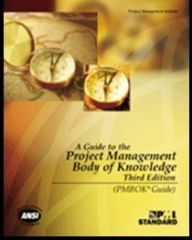
The Standard Deviation Formula
|
|
|
Enterprise Environmental Factors, Organizational Process assets, Project Scope statement, Project Management Plan
|
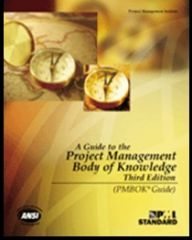
What are the inputs for Communications planning?
|
|
|
Communications requirements analysis, Communications technology
|
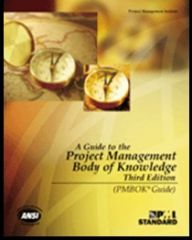
What are the tools and techniques for Communications Planning?
|
|
|
Communications Management plan
|
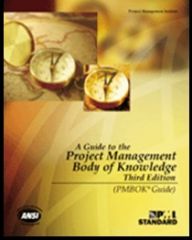
What are the outputs for Communications Planning?
|
|
|
Communications management plan
|
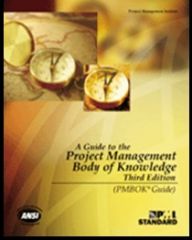
What are the inputs for Information Distribution?
|
|
|
Communications skills, Information gathering and retrieval systems, Information Distribution methods, Lessons learned process
|
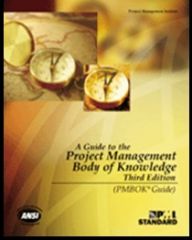
What are the tools and techniques for Information Distribution?
|
|
|
Organizational process assets (updates), Requested changes
|
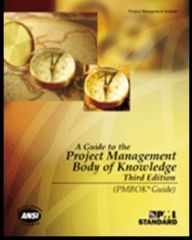
What are the outputs for Information distribution?
|
|
|
1. Work Performance Information 2. Performance Measurements 3. Forecasted Completion 4. Quality control measurements 5. Project Management Plan 6. Approved Change requests 7. Deliverables
|

What are the inputs for Perormance Reporting?
|
|
|
1. Information presentation tools 2. Performance information gathering and compilation 3. Status review meetings 4. Time reporting systems 5. Cost reporting systems
|
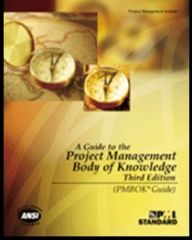
What are the tools and techniques for Performance Reporting?
|
|
|
1. Performance Reports 2. Forecasts 3. Requested Changes 4. Recommended corrective actions 5. Organizational process assets
|
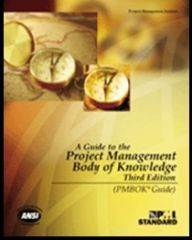
What are the outputs for Performance Reporting?
|
|
|
1. Communications Management Plan 2. Organizational process assets
|
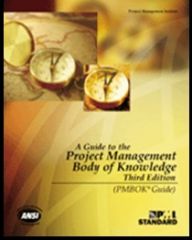
What are the inputs for Manage Stakeholders?
|
|
|
1. Communication methods 2. Issue logs
|

What are the tools and techniques for Manage Stakeholders?
|
|
|
1. Resolved issues 2. Approved change requests 3. Approved Corrective actions 4. Organizational Process Assets 5. Project Management Plan
|
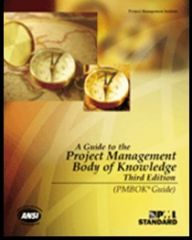
What are the outputs for Manage Stakeholders?
|
|
|
Memos and emails
|
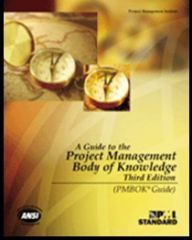
Examples of non-formal communication
|
|
|
The company goals and how to adhere to them.
|
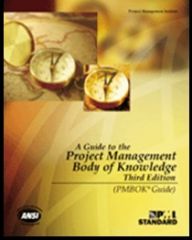
Quality Policy defines
|
|
|
A process of Plan-Do-Check-Act to improve quality. According to Deming, each process should go through these steps to improve the quality.
|
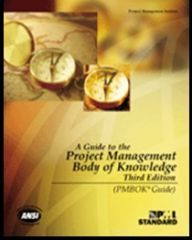
Deming suggested
|
|
|
Apply continuous small improvements to reduce costs and ensure consistency.
|

Kaizen Theory
|
|
|
You compare the cost of incremental improvements against the increase in revenue made from quality improvements. Optimal quality is reached when cost of improvements equals the costs to achieve quality.
|
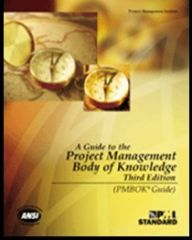
Marginal Analysis
|
|
|
In control charts, if there are seven points on one side of mean, then an assignable cause must be found.
|

Rule of seven
|
|
|
category or rank given to entities having same functional use but different technical characteristics. As an example, for different grades of hotels, the customers expectations are different. Poor grade may be acceptable, but poor quality is not.
|
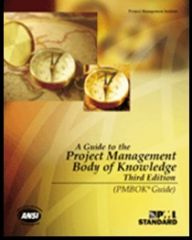
Grade refers to
|
|
|
Gold-plating
PMI does not recommend gold-plating. |
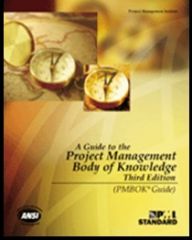
Giving extras i.e. doing more than the project scope is called:
|
|
|
Benefit/Cost Analysis
Benchmarking Additional quality planning tools Design of experiments Cost of quality |
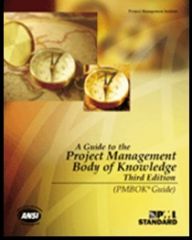
The following are tools and techniques for Quality Planning process
|
|
|
Cause and effect diagram
Control charts Flowcharting Histogram Pareto chart Run chart Scatter diagram Statistical Sampling Inspection Defect repair review |

Perform Quality Control focuses on correctness of work. It includes inspections.
The tools and techniques used for Quality Control are - |
|
|
Formally authorizes the project.
Gives the objectives and business case Identifies the Project Manager. Generic enough not to change often. Written by a Manager higher in authority than Project Manager. Includes name, description, deliverables A project does not start unless it has a Project charter. |
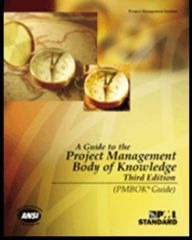
A project charter
|
|
|
involves the process of taking a project from concept to detailed design.
|

Describe Progressive Elaboration
|
|
|
Formed to review change requests. It is used to approve or reject change requests. After the project scope has been baselined, each requested change must go through a change control review process.
|
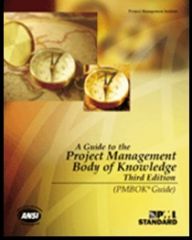
Desribe the Change Control Board
|
|
|
Evaluate (assess) the impact of change to the project
Create alternatives including cutting other tasks, crashing, fast-tracking etc. Meet with management, sponsors etc. Meet with the customer if necessary |
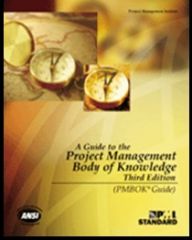
When a change request is received, the following steps must be taken (in this order)
|
|
|
A system that keeps track of status of all the project tasks. It is used to track the status of the project. The exam does not focus on any specific system (for example Microsoft Project ).
|
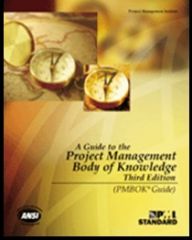
Describe Project Management Information System (PMIS)
|
|
|
the processes required to ensure that the project includes all the work, and only all the work required to complete the project successfully. It is primarily concerned with controlling what is and what is not in the scope.
|
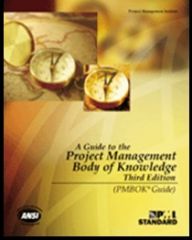
The knowledge area of Scope Management includes:
|
|
|
is the process of project selection. It involves making a decision about which project an organization should execute.
|
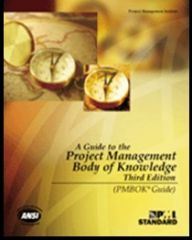
Describe Project Portfolio Management
|
|
|
These are
Benefits Measurement Constrained Optimization |
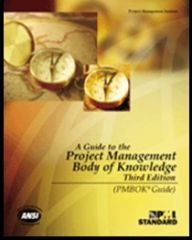
There are two types of project selection methods.
|
|
|
Establish unambiguous and realistic objectives
Periodically Evaluate if objectives are being met Take corrective actions |
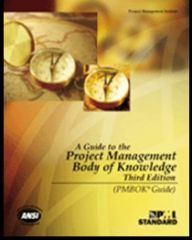
Management by Objective (MBO) is a management philosophy with three objectives -
|
|
|
No task should be less than 8 hours or more than 80 hours.
|
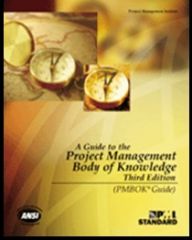
8/80 rule for WBS
|
|
|
find more affordable, less costly methods for accomplishing the same task.
|
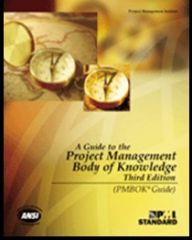
Value Analysis approach is used to:
|
|
|
Straight line depreciation The same amount is deprecated (reduced) from the cost each year.
Double-declining balance - In the first year there is a higher deduction in the value - twice the amount of straight line. Each year after that the deduction is 40% less than the previous year. Sum of year depreciation - Lets say the life of an object is five years. The total of one to five is fifteen. In first year we deduce 5/15 from the cost, in second year we deduce 4/15, and so on. |
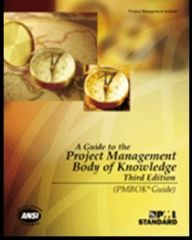
Depreciation is technique used to compute the estimated value of any object after few years. There are three type of depreciation techniques. These are:
|
|
|
Estimates are based on past projects (historical information)
It is less accurate when compared to bottom-up estimation It is a top-down approach It takes less time when compared to bottom-up estimation It is a form of an expert judgment |
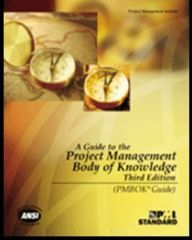
Analogous Estimating is an estimating technique with the following characteristics -
|
|
|
Regression Analysis is a mathematical model based upon historical information.
Learning Curve model is based upon the principal that the cost per unit decreases as more work gets completed. |
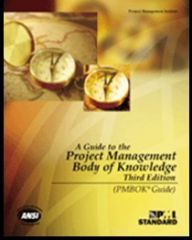
In Parametric Modeling Estimation, you use a mathematical model to make an estimate. It is of two types.
|
|
|
Reducing the probability of risk
Developing contingency plans Passively accepting consequences. Transferring risk |
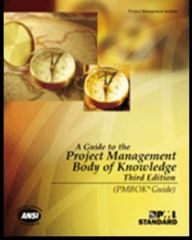
Responses to threat include --
|
|
|
Some characteristics of the Delphi technique are -
The experts identities are anonymous. They are not in the same room. The PM tries to build a consensus among the experts. |
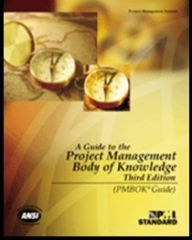
Delphi technique is most commonly used to obtain expert opinions on technical issues. It can be used to get inputs on Scope, Estimates or Risks.
|
|
|
who does what.
|
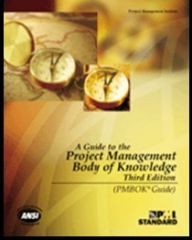
Responsibility Assignment Matrix (RAM) defines
|
|
|
Referent - project team knows the PM
Formal Power - Power due to Project Managers position Technical Power - Project Manager has strong technical skills in the projects domain. Coercive Power - The project team is afraid of the power the Project Manager holds. |
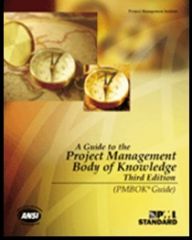
A Project Manager may yield authority over the project team in one of the following ways:
|
|
|
those in the team.
|
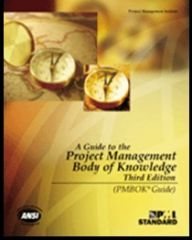
Conflicts are best resolved by:
|
|
|
Problem Solving or Confrontation (look at the facts, analyze them and find a solution). This is an example of win-win situation.
Compromising (Find the middle route). This is an example of loose-loose situation. Withdrawal or Avoidance Smoothing (Emphasize the agreements) Forcing (Do it my way). This is an example of win-loose situation. |
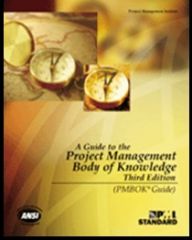
There are standard conflict resolution techniques available to resolve conflicts. These are (from best to worst) -
|
|
|
Define the cause of the problem
Analyze the problem Identify solution Implement a decision Review the decision, and confirm that the problem is solved. |
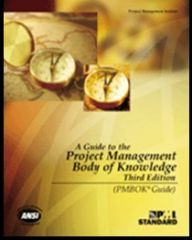
The process of problem solving has these steps -
|
|
|
People accept to be rewarded for their efforts. This is a motivation factor. People put in more efforts because they accept to be rewarded for their efforts.
|
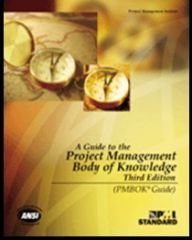
Define Expectancy Theory
|
|
|
There are two type of employees. Employees of type X need to be always watched. They cannot be trusted and need to be micro managed. Employees of type Y, on the other hand, are self-motivated. They can work independently.
|
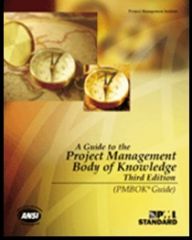
Describe McGregory Theory of X and Y
|
|
|
Hygiene factors (salary, cleanliness etc.) if not present can destroy motivation. However good hygiene alone does not improve motivation. What motivates people is the work itself. The motivation factors for employees include responsibility, self-actualization, growth, recognition etc.
|
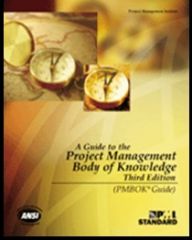
Describe the Herzberg Theory
|
|
|
Self-fulfillment
Esteem Social Safety Physiology |
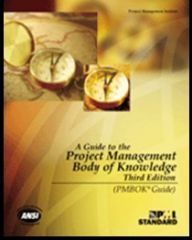
Identify Maslow's Hierarchy of needs from the highest to lowest are -
|
|
|
in which only one qualified seller exists in the market.
|
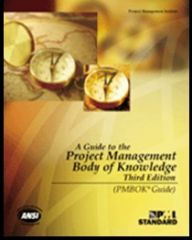
Sole Source refers to a market condition:
|
|
|
in which the company prefers to contract with only one seller.
|
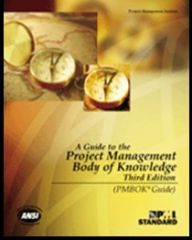
Single Source refers to a market condition:
|
|
|
where very few sellers exist, and the action of one seller will have impact on other seller prizes.
|
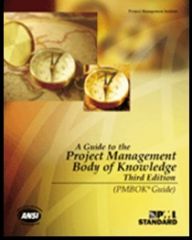
Oligopoly refers to a market condition:
|
|
|
is a powerful and unexpected event, such as hurricane or other disaster.
|
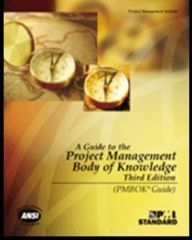
Define Force majeure
|
|
|
is a typical belief that one's culture is superior to the foreigner's culture.
|
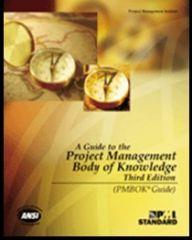
Define Ethnocentrism
|
|
|
The Project Sponsor
|
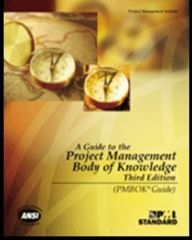
Who Creates the Project Charter?
|
|
|
The Initiation Process Group
|
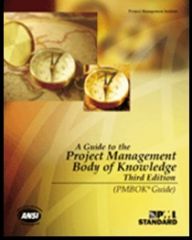
Which process group is the Project Charter created in?
|
|
|
The Customer/Project Sponsor. It describes their needs, product scope and how the project fits into their strategic plan.
|

The Project Statement of Work is created by?
|
|
|
Enterprise Environmental Factors - They are inputs to Develop Project Charter and many other processes
|

Company culture and existing systems are known as:
|
|
|
Organizational Process Assets
|
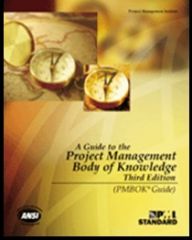
Existing processes procedures and historical information is known as:
|
|
|
Constrained Optimization Methods
|
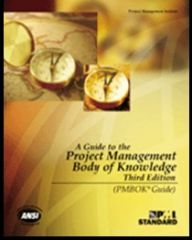
What type of project selection method is Linear Programming?
|
|
|
Benefit Measurement Methods
|
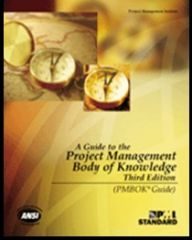
What type of project selection method is Economic Models?
|
|
|
Planning
|
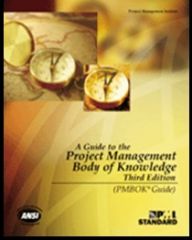
The Configuration Management System is designed in which process group?
|
|
|
Assumptions are beliefs held to be true, but not proven to be true. Assumptions should be documented in the project plan
|
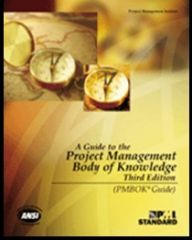
Define for integration - Assumptions
|
|
|
Constraints are restrictions the project must operate within.
|
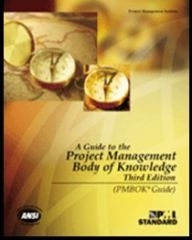
Define for integration -Constraints
|
|
|
Historical information is a key area of the exam. Historical information is proof from other project managers of successes and failures. Historical information allows the project manager to rely on what has been proven, what has been accomplished, and what has been archived for reference.
|
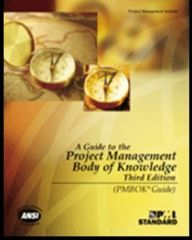
Define for integration - Historical Information
|
|
|
Integrated Change Control requires evaluation of change requests to determine their worthiness for approval-or lack thereof for denial. Change requests can be written or verbal, internal or external. Change requests can stem from stakeholders or external sources such as government agencies, laws, or industry mandates.
|
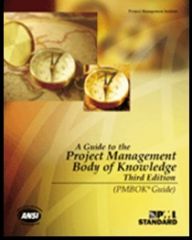
Define for integration - Integrated Change Control
|
|
|
A change control system consists of a formal, documented procedure for handling change, nothing more. On the exam you remember that a change control board is responsible for authorizing or denying the requested change.
|

What is a change control system?
|
|
|
procedure details all the activities, interactions, and related roles and responsibilities of the project team members and other stakeholders involved in executing the administrative closure procedure for the project.
|
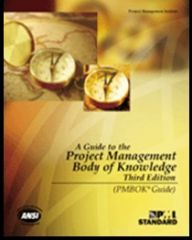
What is Administrative Closure?
|
|
|
the subdivision of project deliverables into smaller (and more manageable) pieces until you have adequately identified in the work breakdown structure all the work on the project.
|
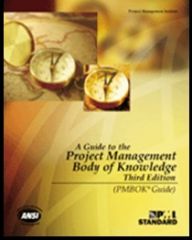
Scope definition is:
|
|
|
Decomposition is the process of subdividing the project work packages into smaller, more manageable components called schedule activities.
|

What is Decomposition?
|
|
|
Fast tracking involves analyzing the critical path to see which activities could be done in parallel (as opposed to sequential execution). It also involves more aggressive use of such PDM activity relationships as start to start so that subsequent activities can begin before the prior activity has been completed. This “overlapping” also reduces the project schedule.
|
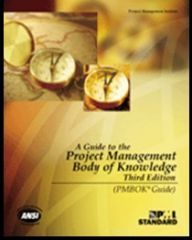
Define Fast-tracking
|
|
|
What's scope management?
|
Process of defining what work is required and then making sure that all that work and only that work is done.
|
|
|
Does scope management allows extra work or gold plating?
|
No
|
|
|
What is the difference between product and project scope?
|
Product is in terms of requirements the product must meet, Project is in terms of the work needed to deliver the product.
|
|
|
5 scope management processes
|
Scope planning, Scope Definition, Create WBS, Scope Verification and Scope Control
|
|
|
Process where detailed project scope statement is prepared.
|
Scope Definition
|
|
|
Smaller pieces of WBS or its lowest level.
|
Work Packages
|
|
|
Define WBS
|
"Deliverable oriented
Hierarchical decomposition of work. Includes only work needed to create deliverables." |
|
|
Process to create WBS
|
Decomposition
|
|
|
When Scope Verification is performed?
|
At the end of each phase in the project life cycle and during Monitoring and controlling process group
|
|
|
Process Group where Scope Planning takes place?
|
Planning
|
|
|
Process Group where Scope Definition takes place?
|
Planning
|
|
|
Process Group where Create WBS takes place?
|
Planning
|
|
|
Process Group where Scope Verification takes place?
|
Monitoring and Controlling
|
|
|
Process Group where Scope Control takes place?
|
Monitoring and Controlling
|
|
|
Who Creates the Project Charter?
|
The Project Sponsor
|
|
|
Which process group is the Project Charter created in?
|
The Initiation Process Group
|
|
|
The Project Statement of Work is created by?
|
"The Customer/Project Sponsor.
It describes their needs, product scope and how the project fit s into their strategic plan" |
|
|
Company culture and existing systems are known as:
|
"Enterprise Environmental Factors
They are inputs to Develop Project Charter and many other processes" |
|
|
Existing processes procedures and historical information is known as:
|
Organizational Process Assets
|
|
|
What type of project selection method is Linear Programming?
|
Constrained Optimization Methods
|
|
|
What type of project selection method is Economic Models?
|
Benefit Measurement Methods
|
|
|
The Configuration Management System is designed in which process group?
|
Planning
|
|
|
Define the Risk Register.
|
Identifies the project risks and associated risk response plans that are needed to support the Schedule Development Process.
|
|
|
Crashing
|
A schedule compression technique in which cost and schedule tradeoffs are analyzed to determine how to obtain the greatest amount of compression for the least incremental cost.
|
|
|
Fast Tracking
|
A schedule compression technique in which phases or activities that normally would be done in sequence are done in parallel.
|
|
|
Monte Carlo Analysis
|
Technique in which a distribution of possible activity durations is defined for each schedule activity and used to calculate a distribution of possible outcomes for the total project.
|
|
|
Resource Leveling
|
A schedule network analysis technique used to address activities that need to meet special delivery dates, address a situation where shared or critical resources are only available for certain times, or to keep resource usage constant.
|
|
|
Critical Chain Method
|
A schedule network analysis technique that modifies the project schedule to account for limited resources.
|
|
|
What is a resource-limited schedule?
|
Also known as a resource-constrained schedule, it results from applying resource leveling to an existing schedule network.
|
|
|
How do project calendars and resource calendars differ?
|
Both identify when work is allowed. Project calendars affect all activites. Resource calendars a specific resource, or category of resources.
|
|
|
Describe the three types of dependencies.
|
"- Mandatory Dependency: those that are inherent in the work being done.
- Discretionary Dependency: also known as preferred logic or soft logic. Usually based on best practices. - External Dependency: those that involve a relationship between project ac" |
|
|
A method of constructing a project schedule network diagram that uses boxes to represent activities and arrows to show dependencies.
|
Precedence Diagramming Method
|
|
|
A method of constructing a project schedule network diagram that uses arrows to represent activities and connects them at nodes to show dependenceies.
|
Arrow Diagramming Method
|
|
|
Identify the inputs to the Activity Definition process.
|
"- Enterprise Enviornmental Factors
- Organizational Process Assets - Project Scope Statement - Project Management Plan - Work Breakdown Structure - WBS: Dictionary" |
|
|
Identify the tools and techniques used in the Activity Definition process.
|
"- Decomposition
- Templates - Rolling Wave Planning - Expert Judgement - Planning Component" |
|
|
Identify the outputs of the Activity Definition process.
|
"- Activity List
- Activity Atrtibutes - Milestone List - Requested Changes" |

